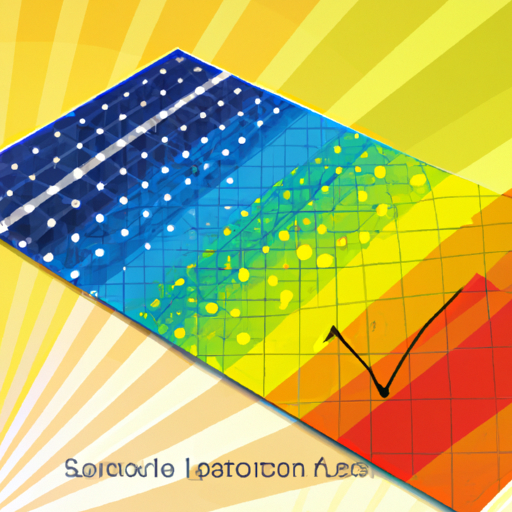Scientists are exploring ways to enhance the stability of mixed halide-perovskites, a type of crystalline material that has the potential to be used in inexpensive solar cells. These materials combine organic and inorganic components, specifically bromides (compounds of bromine) and iodides (compounds of iodine). However, the current challenge lies in the structural defects that occur during the rapid and uneven crystallization process of these materials. These defects allow the movement of bromide and iodide within the crystal at different rates, leading to reduced overall performance. Recently, researchers have discovered a new technique that results in mixed halide-perovskite films with fewer defects and improved stability.
A New Method for Enhanced Stability and Performance
The new method of producing mixed halide-perovskites offers several advantages, including improved stability and performance of solar cells. One key aspect is the better control over the crystallization rates of the perovskite material. The researchers have gained a deeper understanding of the faster crystallization of bromide compared to iodide and have utilized this knowledge to achieve a more ordered crystal structure. This leads to a reduction in defects and the migration of halides, thus minimizing the segregation of bromide and iodide. Consequently, the material exhibits uniform mixing of bromide and iodide, enabling even light absorption. Ultimately, solar cells fabricated using this new method are expected to perform better in real-world conditions.
Gentler Gas-Quench Method for Controlled Crystallization
In contrast to the commonly used anti-solvent approach, the gentler gas-quench method provides better control over crystallization. This method initially forms a bromide-rich surface layer, which then induces columnar growth from the top-down, resulting in a gradient structure with less bromide in the bulk compared to the surface region. In contrast, the anti-solvent method does not produce such a gradient structure. The researchers from the National Renewable Energy Laboratory, the University of Toledo, and the University of Colorado Boulder have demonstrated that the gas-quench method also reduces the occurrence of bromide vacancies and improves the opto-electronic performance of the materials. Solar cells fabricated using the gas-quench method retain desirable light absorption properties and exhibit enhanced performance, such as higher charge carrier mobility, higher open circuit voltage, and improved stability.
Funding and Acknowledgments
This research has received funding from the Department of Energy (DOE), specifically the Office of Science, Office of Basic Energy Sciences, Energy Frontier Research Centers (EFRC) Program. The authors also acknowledge the support from the Center for Hybrid Organic Inorganic Semiconductors for Energy (CHOISE), an Energy Frontier Research Center funded by the DOE Office of Science, Office of Basic Energy Sciences. The fabrication and testing of solar cells were supported by the Advanced Perovskite Cells and Modules program of the National Center for Photovoltaics, which is funded by the DOE Office of Energy Efficiency and Renewable Energy, Solar Energy Technologies Office. The first-principles calculations utilized computational resources sponsored by the DOE Office of Energy Efficiency and Renewable Energy, located at the National Renewable Energy Laboratory.
